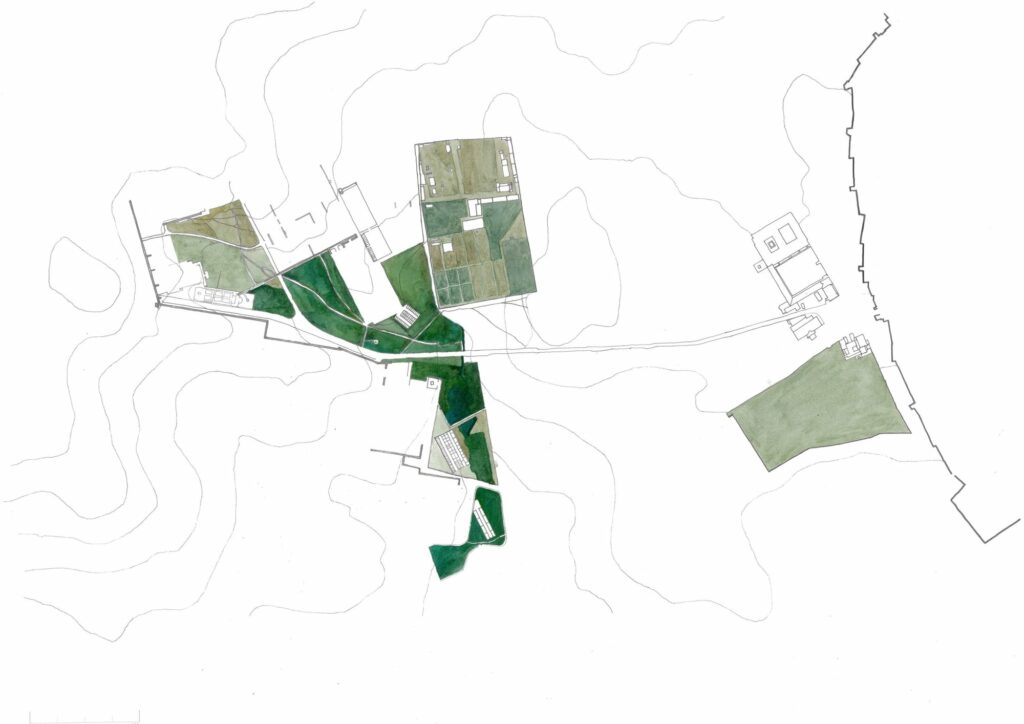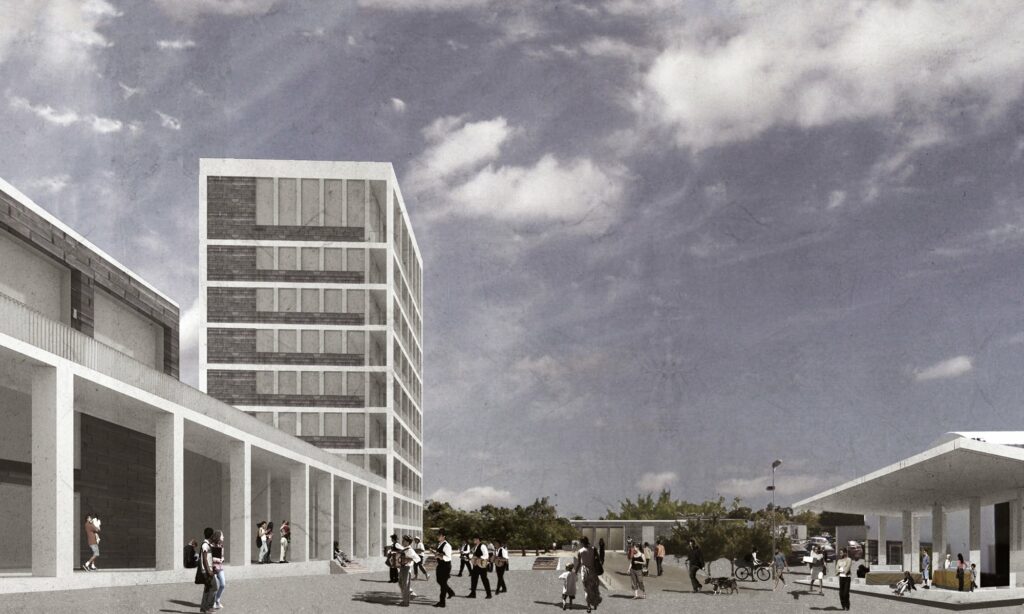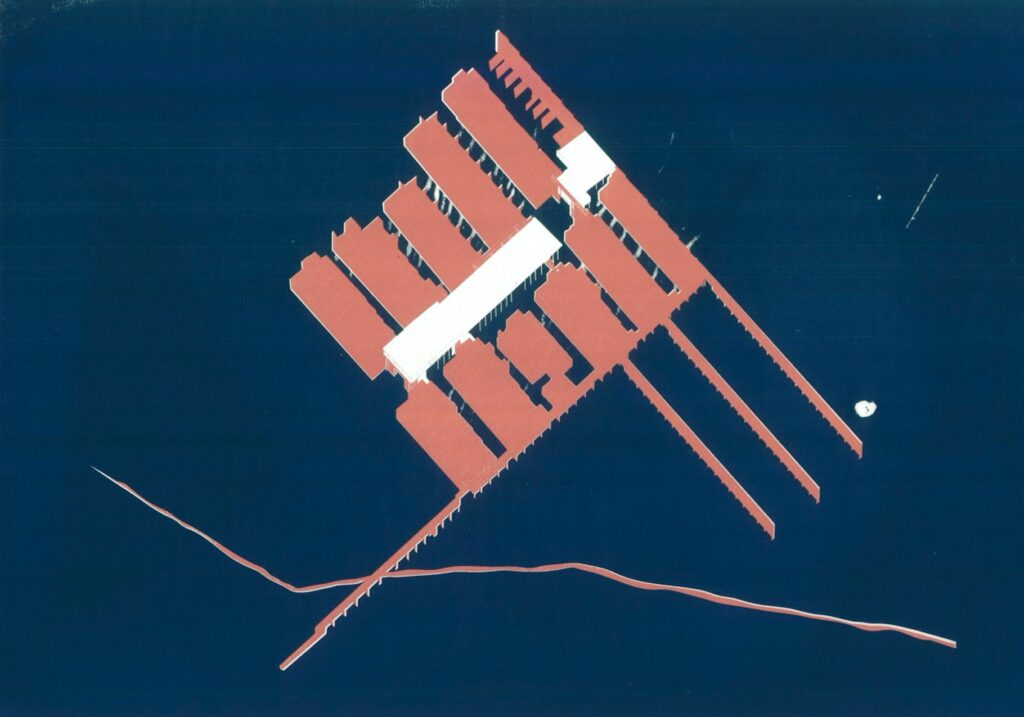Malagueira and Évora, Portugal
– Cathy Hawley and Hugh Strange
School of Architecture and Landscape, Kingston University
This year we have been examining the relationship between the ancient Roman, medieval and baroque city of Évora and the adjacent Malagueira public housing development – some 1100 low-rise units designed by Álvaro Siza from 1977 onwards in the aftermath of the revolution in Portugal. Malagueira has long been regarded internationally as a seminal work of critical regionalism and Siza’s most important statement on the typologies of social housing.
Malagueira was conceived as an extension of the old city of Évora, specifically rejecting the model of six storey low-cost housing blocks that had been built on its edge in the 1960s, and responding instead, and at equivalent density, to the local landscape and building forms, as well as to the close proximity of the historic urban fabric. None of the civic buildings designed by Siza were completed. Our unit is situated in this contemporaneous situation and speculates on ideas of collective living: the individual and the city.

Each student began the year by selecting an archival piece of Siza’s Malagueira project from a private collection in Somerset: a sketch, a master plan, a technical drawing, one of Siza’s own photographs of Évora itself. These resulted in an artefact of the students own making: a physical object, a drawing or series of drawings or prints, a photograph of a spatial model. This process involved historical or contemporaneous research, iteration and careful thought. Students were asked to be exploratory and intuitive in approach.

These led in turn to a strategic response rather than a building proposal – about water, about landscape and topography, about community. In Malagueira we saw a community built over a number of years. Here, the collective and public spaces, not all realised, as well as public infrastructures, have a clear conceptual relationship to the individual unit and to the idea of community in the project. Students were asked to think about possible projects and sites that might build upon and explore ideas of collective living – the individual unit and the city. Students were encouraged to have ideas about certain conditions rather than precise sites. In many instances this lead on from the research the students had been doing individually and the pieces they had selected and responded to from the Archive.

Sites were then located and designs developed as a development of these strategic responses. The locations of these designs varied, including the space between the city walls and Malagueira, beyond the current city into rural landscape beyond, and in spaces that form part of the development itself. Projects included forms of collective housing: co-housing, housing for old people; buildings for the public and the community; and urban proposals that reinforce the idea of the collective life in and around Malagueira.
